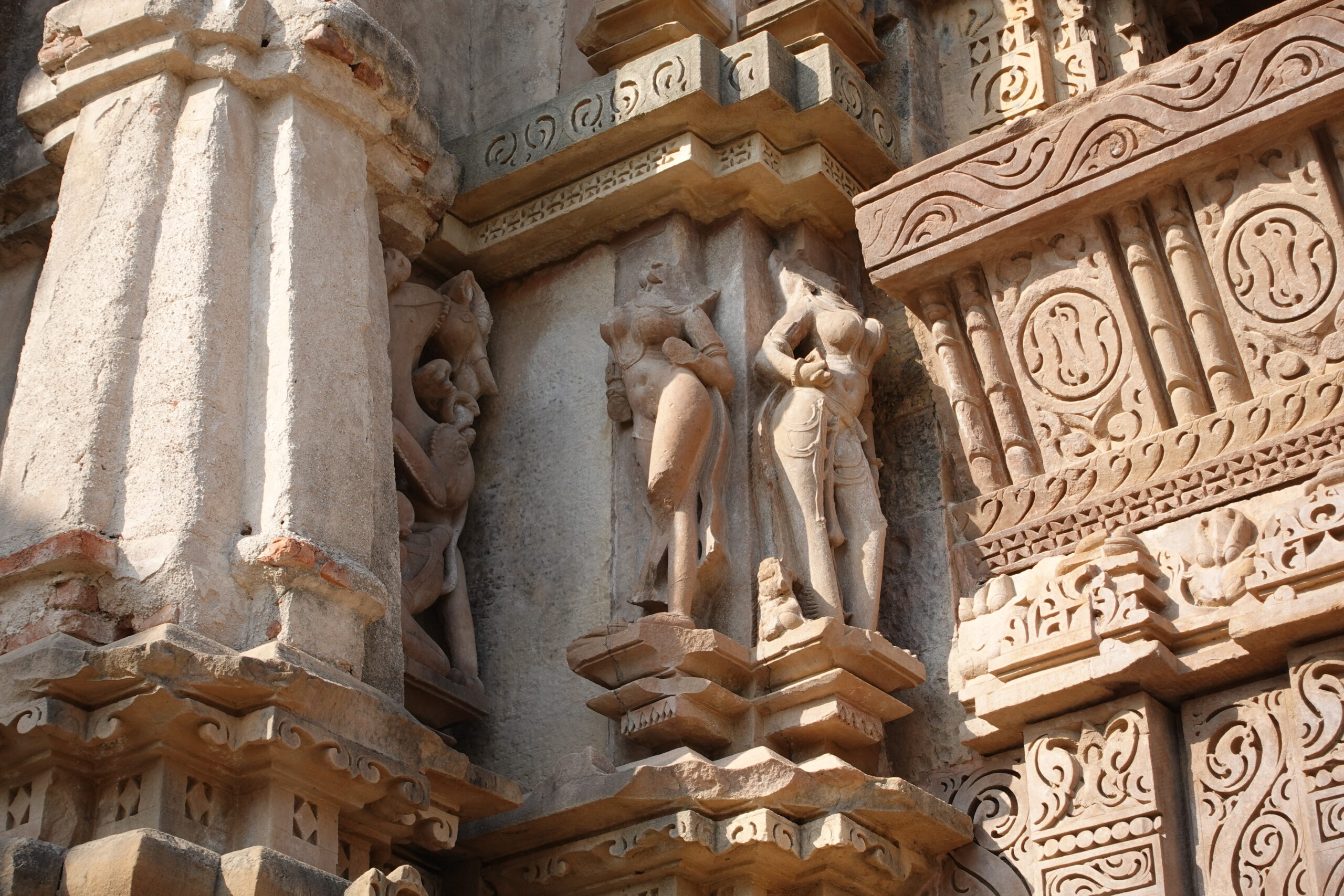Travels to Buddhist sites in India and Sri Lanka (14)
A Feast of Beautiful Tennyo! Visit to the World Heritage Site of Khajuraho - Thinking about sex and religion
The first destination of the second Indian expedition was a town called Khajuraho, about an hour and a half flight from Delhi.

It was well after dark when I arrived at the site, but the moonlight was truly beautiful, perhaps because there were no large buildings in the countryside.
I came to Khajuraho for a reason. I wanted to see "something" here.
Here it is.
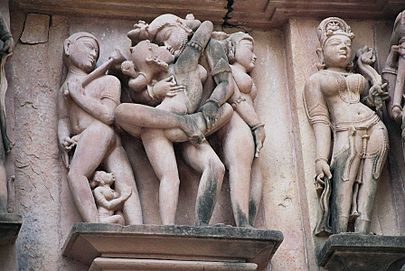
I may have surprised you all, but I came all the way to Khajuraho to see this.
In this Khajuraho, there are many sexual sculptures called Mitna statues. I was interested in this subject because of a book written by Noboru KARASHIMA and Yasuaki NARA, which has been introduced in this blog before.A World History of Life 5: Faces of India."This was the first time this sculpture was introduced in
As some of you may have noticed, the cover of this book is also a Khajuraho sculpture. It is such an important part of Indian culture.
According to the commentary, the Mitna image is of great significance in the Hindu conception of happiness. This is because in Hinduism, sexual love (kama) was officially recognized as one of the three major goals of life. The author says the following.
Hindus approve of direct sexuality, and openly. The celebration of sexuality is a feature of ancient societies, large and small, but in India there was even less prejudice against sexuality than there is today. This is evidenced by the fact that kama is listed as one of the three purposes of life, along with dharma (religion) and artha (wealth). Direct sexual love was frankly and cheerfully discussed, and this can be seen in literature and art.
Kawade Shobo Shinsha, Noboru Karashima and Yasuaki Nara, A Global History of Life 5: The Face of India, p. 234
Khajuraho was mentioned as symbolic of this.
More to the point, by Sadakata ChenA Theory of Indian Sexual Culture."It was also a major catalyst for the following preaching in
Buddhism is considered to be rigid and serious. However, it is not impossible to find erotic, gross, and sadistic elements in the vast Buddhist literature. (omitted).
Let's focus on eroticism in Buddhist scriptures. Buddhism appears to be indifferent to sexuality. But that is only on the surface; repressed sexuality lurks beneath the surface. Buddhism, which emphasizes the overcoming of sexual desire, must presuppose such great concern for it. [omitted].
I am now trying to show the back roads of Buddhism. Some Buddhist scholars may not like this. However, what can we understand about Buddhism if we avoid the issue of sexuality, which is very important for human beings? In India, sexual love (karma) is one of the three major goals of life. I believe that the significance of Buddhism can be properly understood only when all aspects of human beings are known.
Shunju-sha, Sadakata Chen, Indian Sexual Culture, p. 1-6.
What can we understand about Buddhism if we avoid the important issue of sexuality?
It is true. Why did Buddhism preach celibacy in the first place? Why did it seek to avoid contact with women at all costs? It may be easy to say that it is to "abstain from worldly desires," but how can sexual love be considered a worldly desire? Without sexual love, there would be no joy of love and no offspring.
And in Hinduism, contrary to Buddhism, sexual love is celebrated as happiness itself and even elevated to a mystical experience.(5) Feel the theme park of the gods at the Mansa Devi Temple in Haridwar - an immersive experience into the Hindu worldview."As I discussed in my article on Hinduism, Hinduism has a particularly strong tendency to affirm human desire. This is in direct contrast to the stoicism of Buddhism, which denies desire.
Well, what is this about? It would be interesting to think about sexual love in Buddhism again here. I decided to visit the Khajuraho Temple to see the Hindu culture of sexual love.
In other words, we do not simply want to go see erotic sculptures.

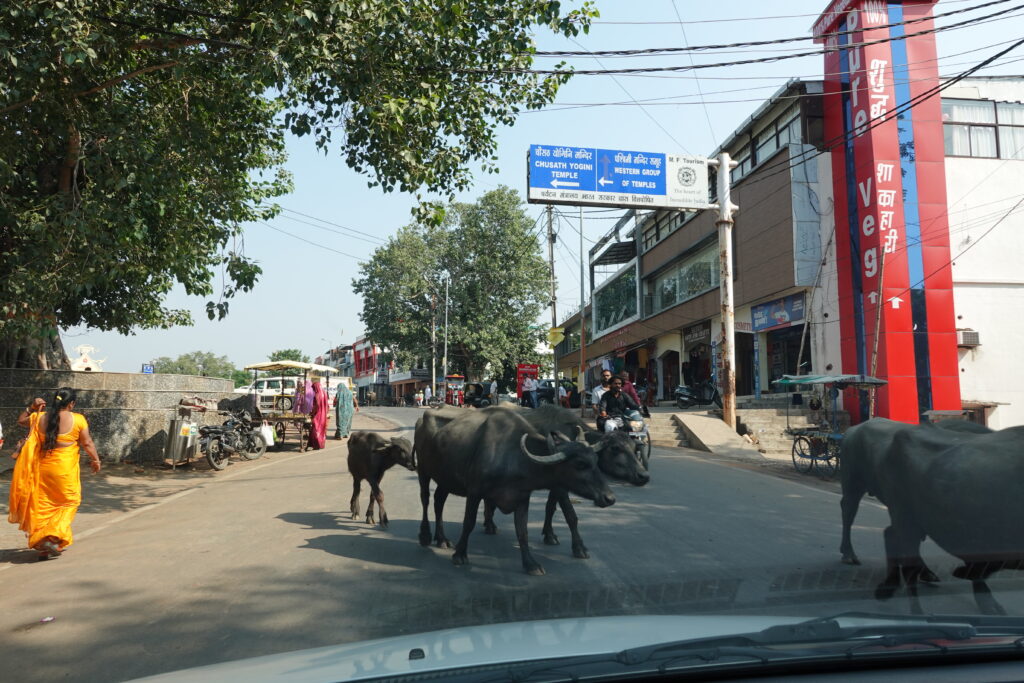
Khajuraho is a small farming village with a population of about 5,000, and although it has become a tourist destination in recent years since its temple complex was registered as a World Heritage site in 1986, it still retains a rural atmosphere.
The temples of Khajuraho are roughly divided into three areas: East, West, and South. The first area I visited was the west group, which is the largest of the three.
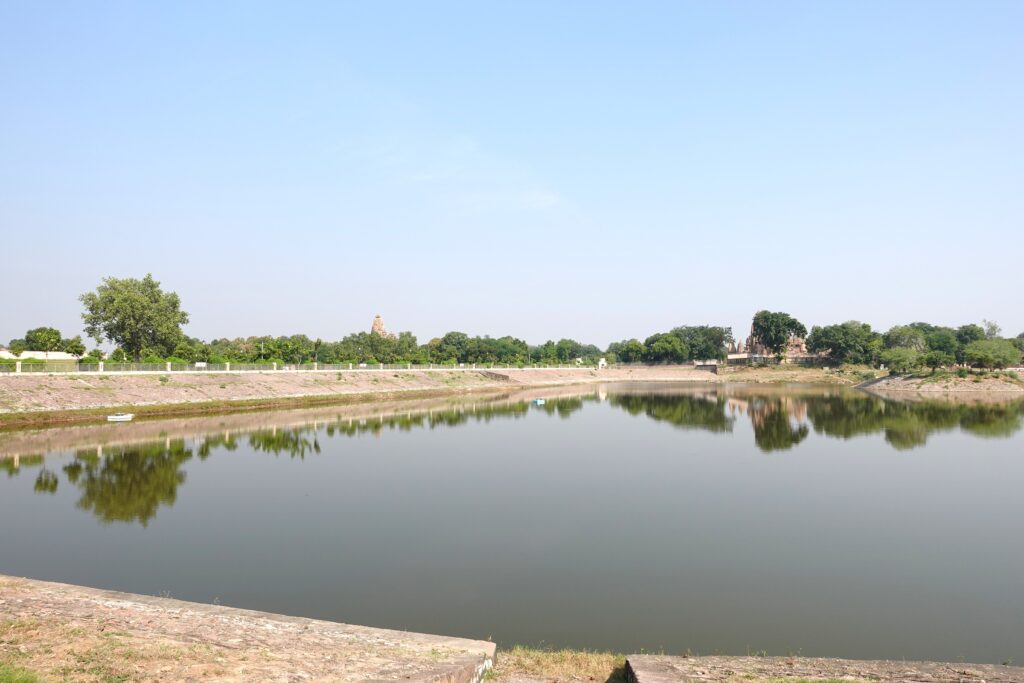
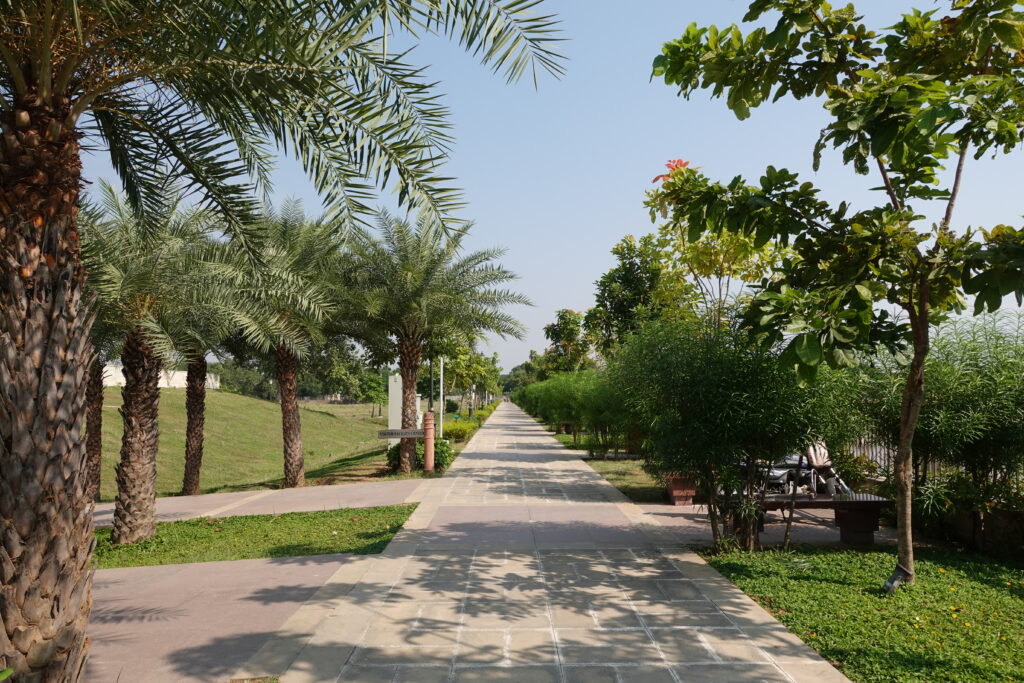
Walking from the parking lot to the entrance, you will come to a large reservoir. And as you walk along this pond, you will see the temple at the end of your line of sight.
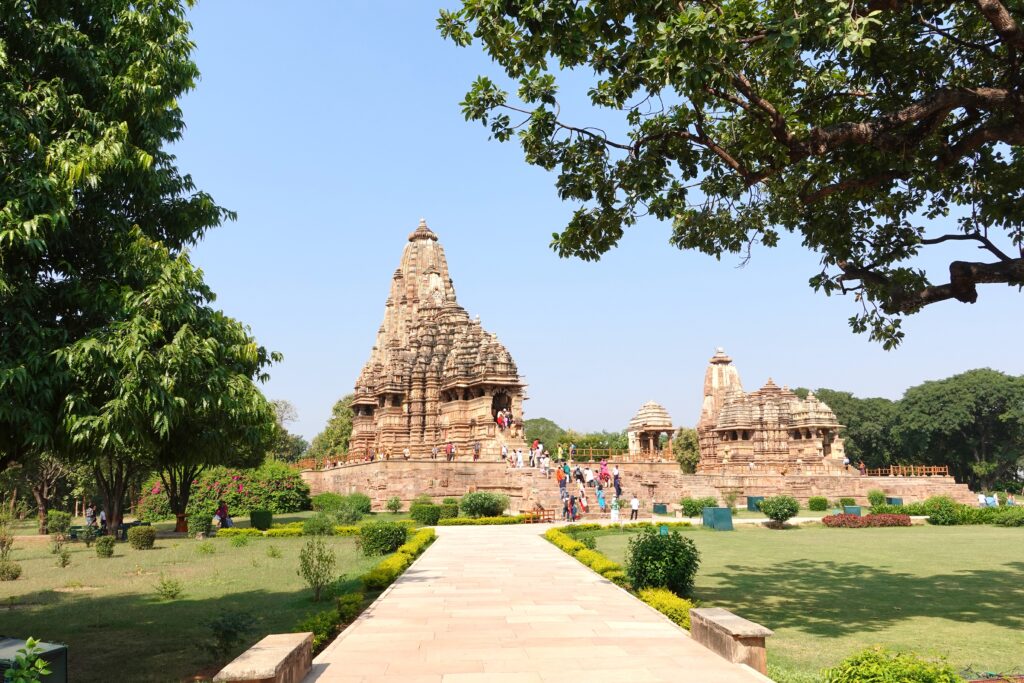
Oh, so this is the Khajuraho Temple! Indeed, this temple is beautiful even from a distance! It may be difficult to convey in a photograph, but I was impressed by the appearance I saw there. It is an architectural style that I could not see in my previous visit to India.
Incidentally, Khajuraho is only a place name, not a temple name. Therefore, officially, I have to mention the name of each temple one by one, but when describing this area as a whole, I will continue to call it Khajuraho for the sake of convenience.
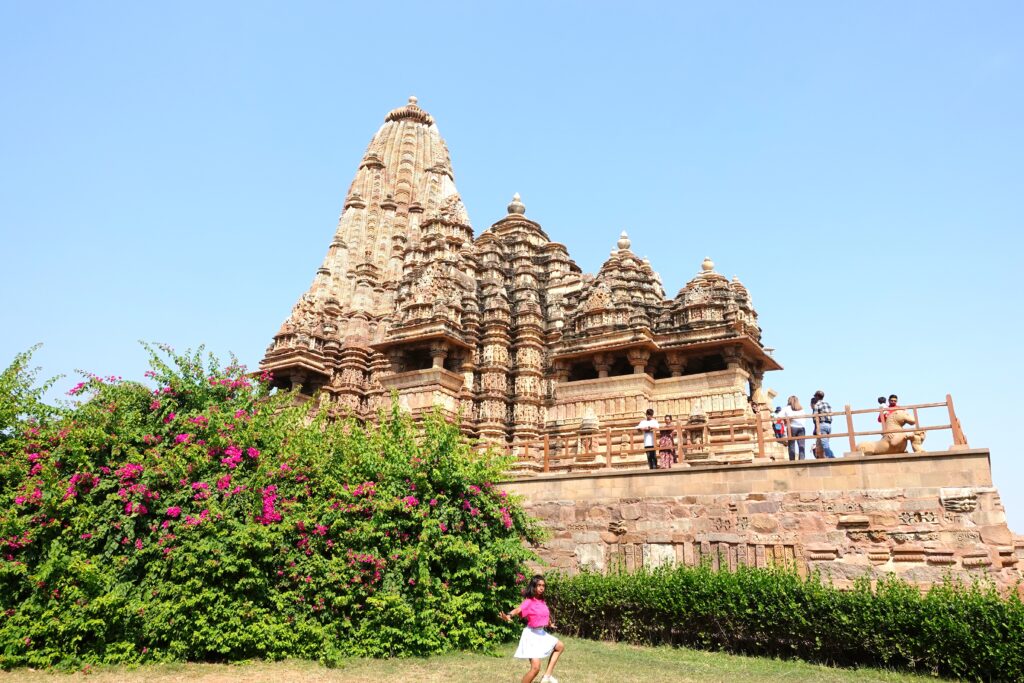
The unique structure gradually rises from the entrance to the back. This is the Kandariya Mahadevi Temple, built in the first half of the 11th century. It is the largest temple in the whole of Khajuraho. It is known as one of the greatest masterpieces in the history of Indian architecture.
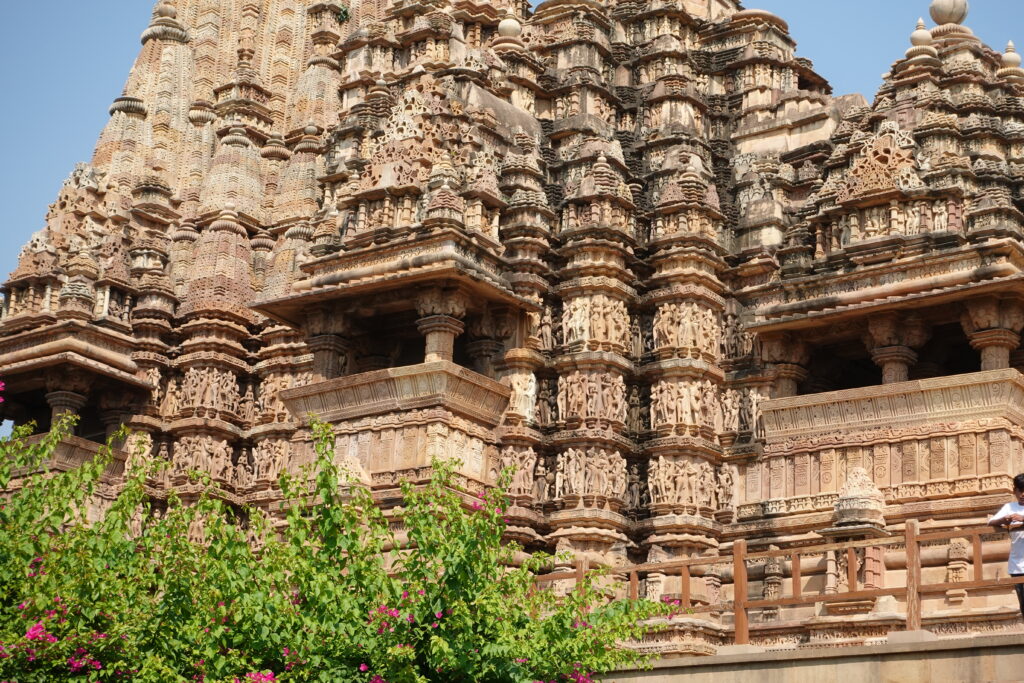
If you look closely, you can see that the walls are covered with detailed carvings. I can't wait to see them up close.
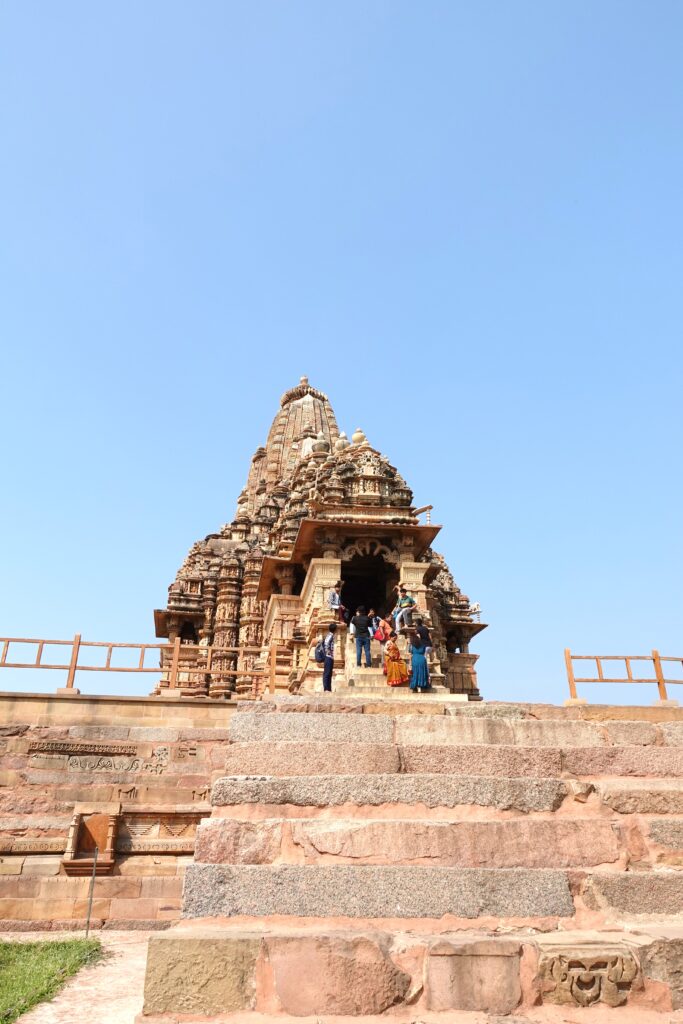
We came to the temple right in front of it. Looking up from the bottom of the stairs, I felt the height of the temple. It was as if we were looking up at the sky.
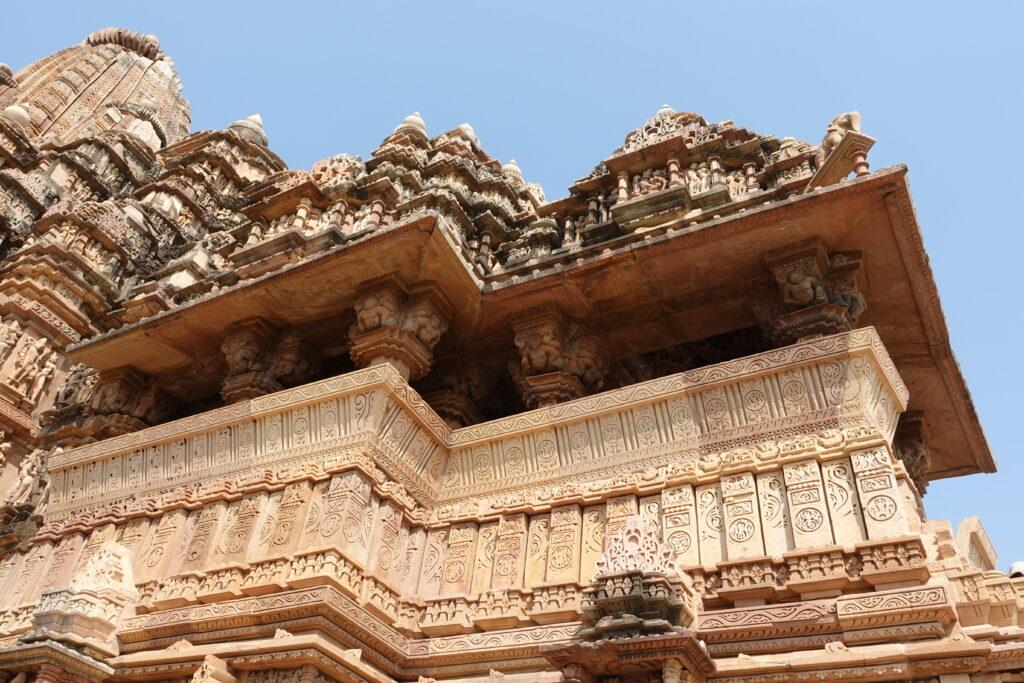
This is the wall of the entrance area.
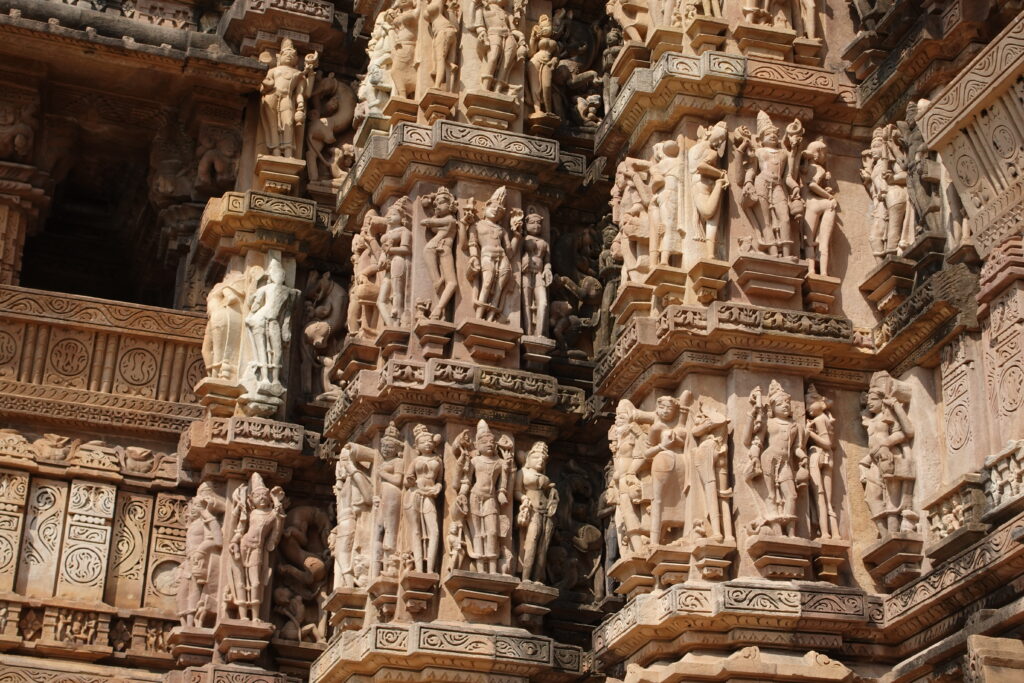
Oh! There it is. Is this the sculpture of Khajuraho? Indeed, they are very finely made. The quality of each piece is amazing.
However, I could not find the image of Mitna that I was looking for. This was a surprise to me, as I had an image of Mithna when I thought of Khajuraho.
When I mentioned this to the guide, he replied, "I'm not sure.
In Khajuraho, Mithna statues make up less than 10% of the total. The statues of Mithna have all become famous, but in fact they are not."
Ho! I didn't know that! This was unexpected.
Then my guide led me to the bottom of the Mitna statue.
Indeed, I saw very little Mitna on the walls as I walked around. So what are 90% of the non-Mitnah sculptures dug around it?
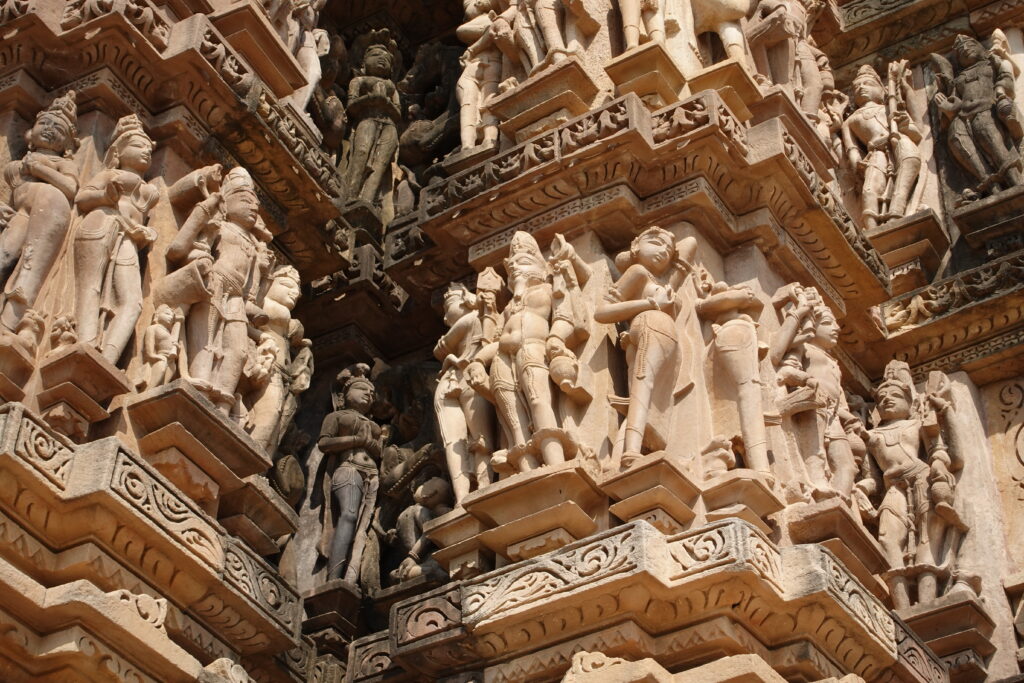
Roughly more than half of the statues are incarnations of Shiva, Vishnu, and many others, and the rest are beautiful celestial maidens that adorn this space. The proportions of these heavenly maidens are also striking. Their breasts and buttocks jut out, their legs are long, and their hips are bent. One of the statues is holding a mirror and putting on makeup, and another is taking off her sari. This statue is much sexier than the Mitna statue seen in the photo.
But at any rate, it was clear that Mitna itself is a tiny minority of the total.
When I came to the center of the temple, the statue appeared before me.

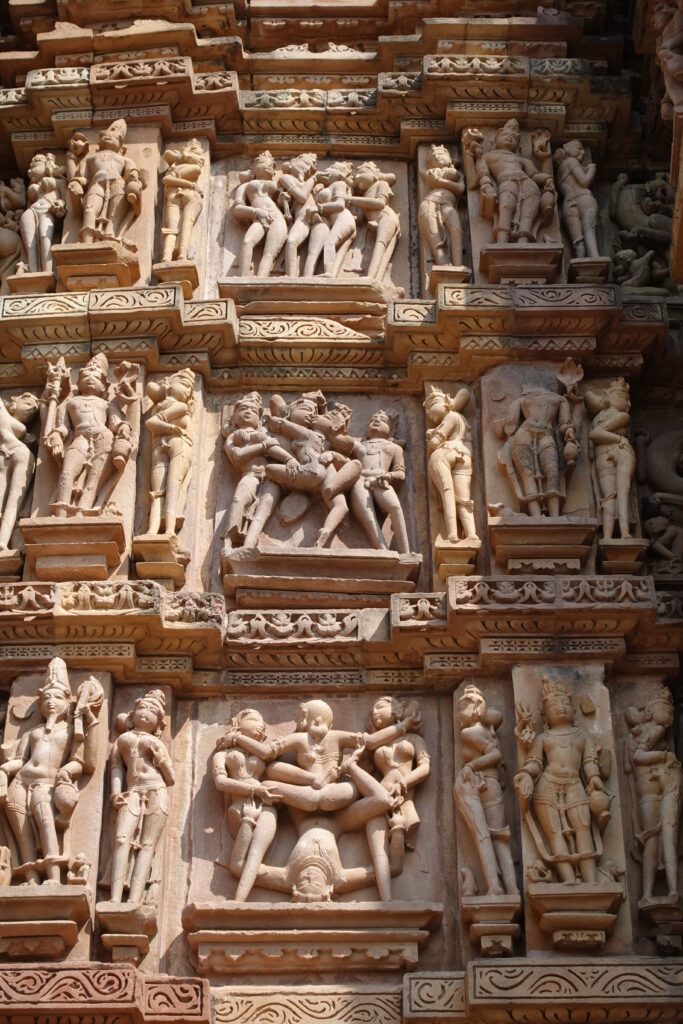
Let's expand.
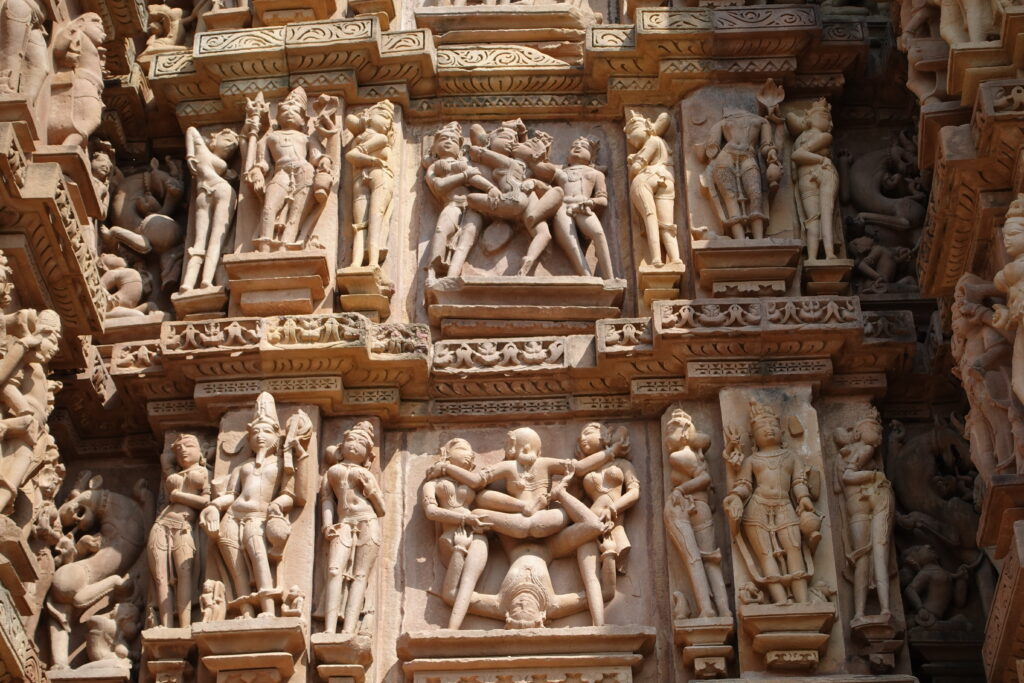
When you see it live, it has a three-dimensional effect and is very different from what you see in a photograph. It has a three-dimensional effect that is different from what you see in a photograph. It is no longer a stone. I laughed at the fact that even the phallic parts inserted in the statues were made so precisely, but I did not feel any sense of vulgarity from these statues of Mithona. There is no lustful impurity in them. There was even a sense of the sublime. This is clearly yoga, and it is oriented toward something beyond mere sexual pleasure.
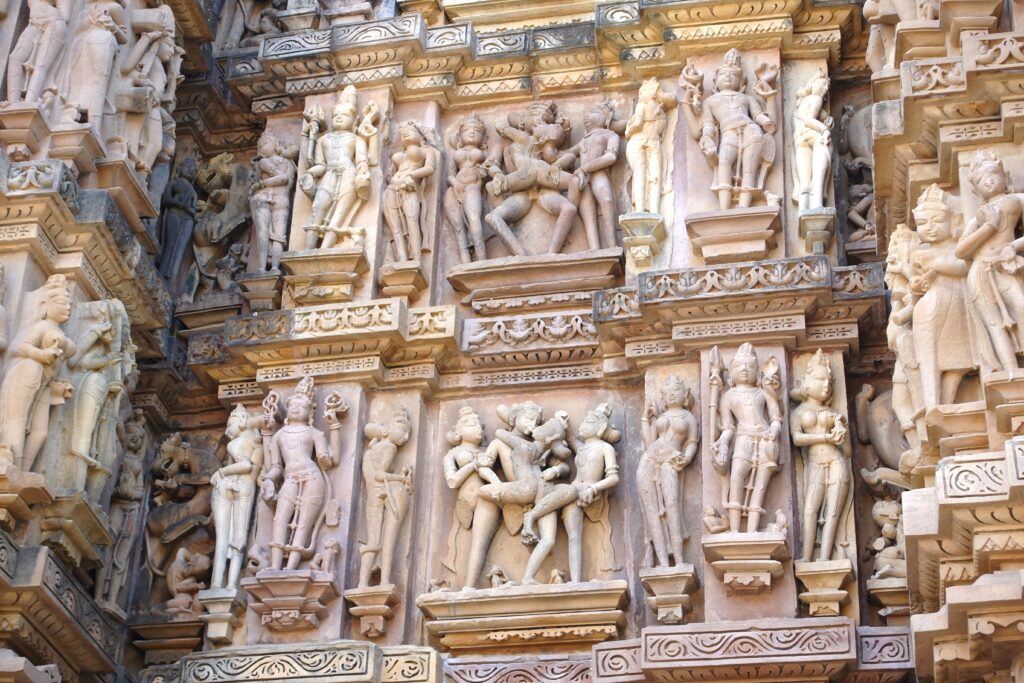
On the other side is the famous statue of Mitna. This is probably the one that is introduced more often in photographs and other media.
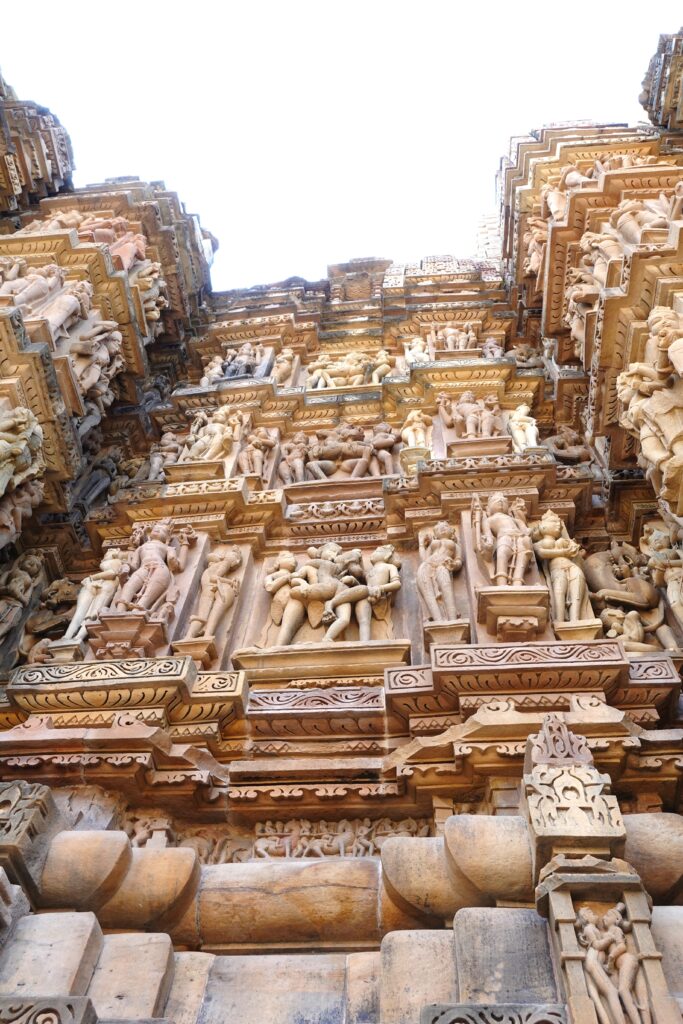
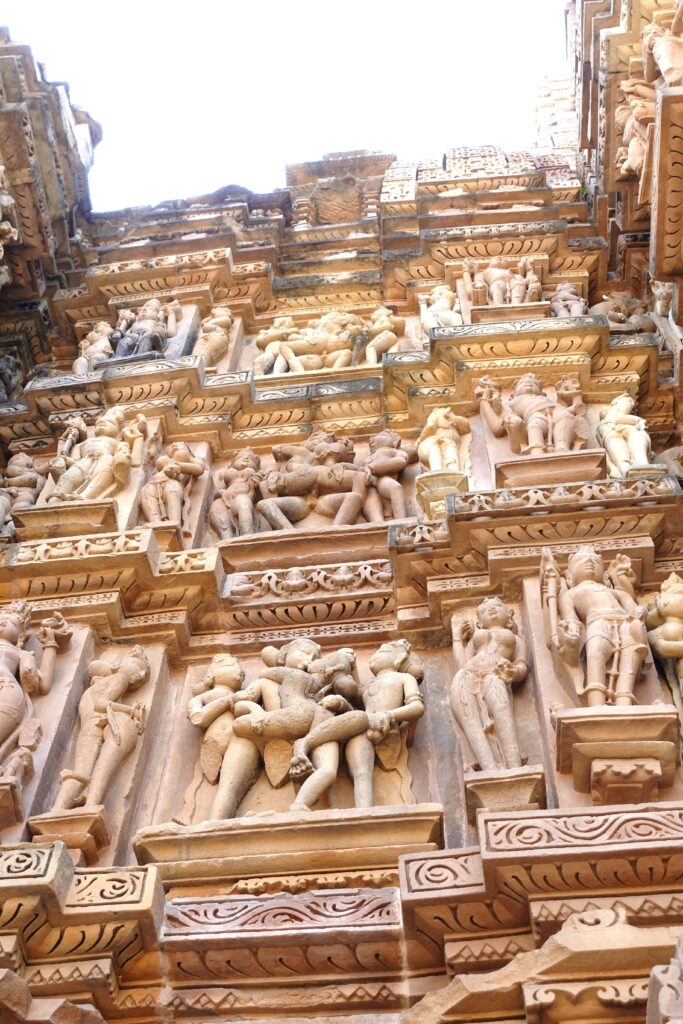
Let's look at it from an angle directly below. This is a privilege that comes only from having visited the site, whereas photographs in books and other publications are usually frontal shots. It is very interesting to feel the three-dimensionality and the roundness of the body.
And as I look at these statues, I think, they look beyond realistic. This is the skill of the artist. Simply copying reality itself does not make one a top-notch artist.
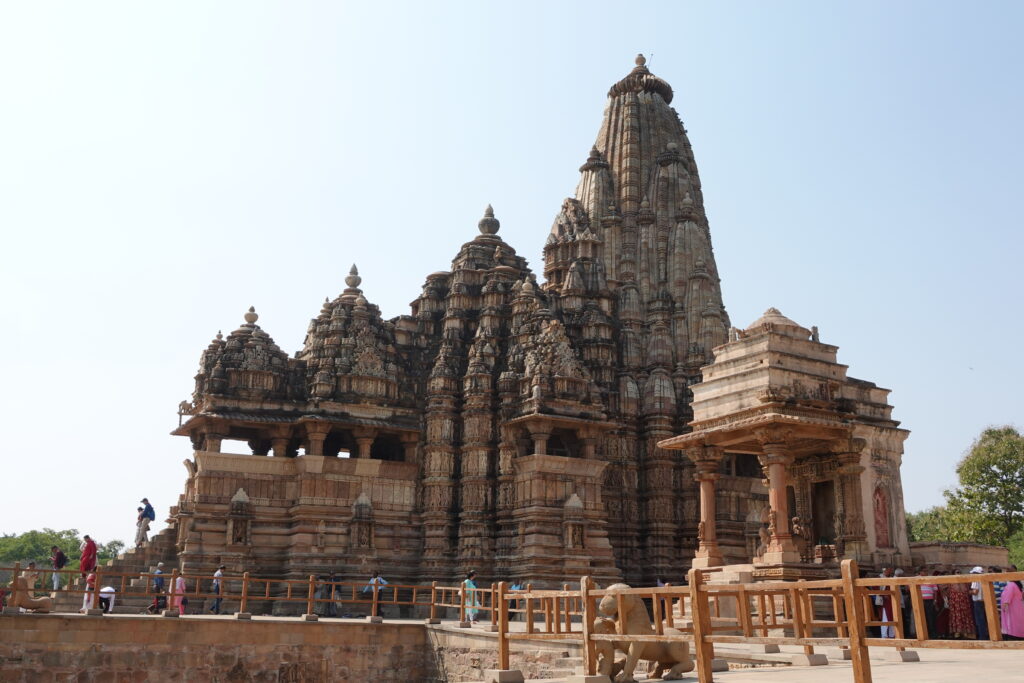
Photo from the opposite side from the previous one. The structure rises like the Himalayas. This architectural style is said to have been created in the image of the Himalayan mountains where Lord Shiva lives.
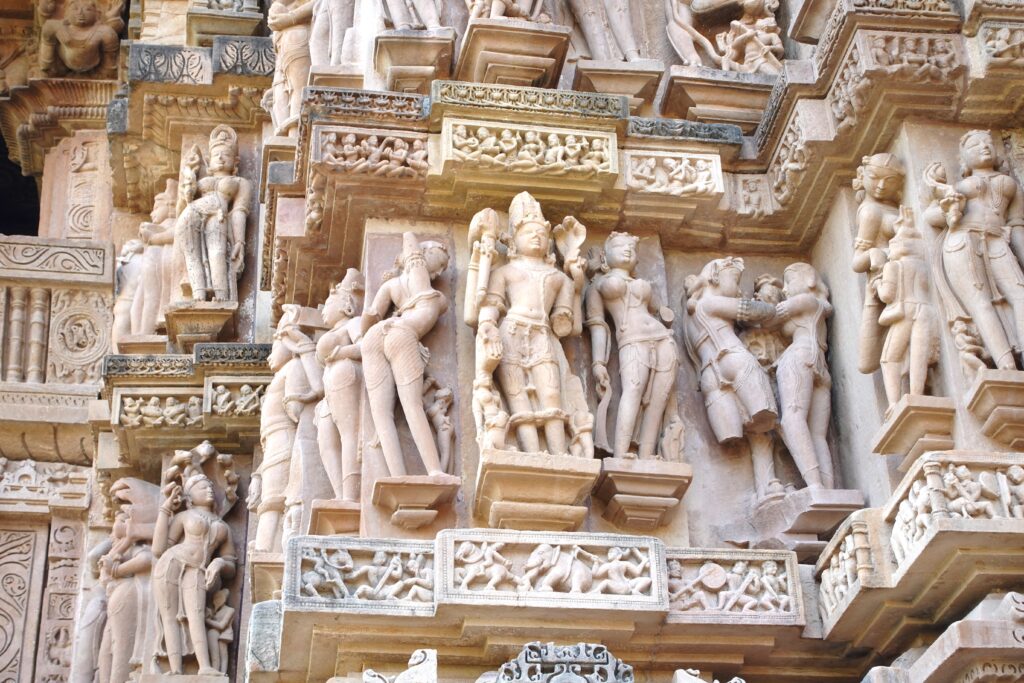
The statues of Mitna are so blatant that it is hard to say anything about them, but it is also true that there are statues of celestial maidens that suddenly catch my attention when I walk around Khajuraho. They all have different figures and faces. Among them, there is one that attracts my attention.
But it does not come from sexuality. Rather, it is a feeling of being gawked at. This is exactly the same power of beauty that I felt in St. Peter's Basilica in the Vatican and the Louvre in Paris.
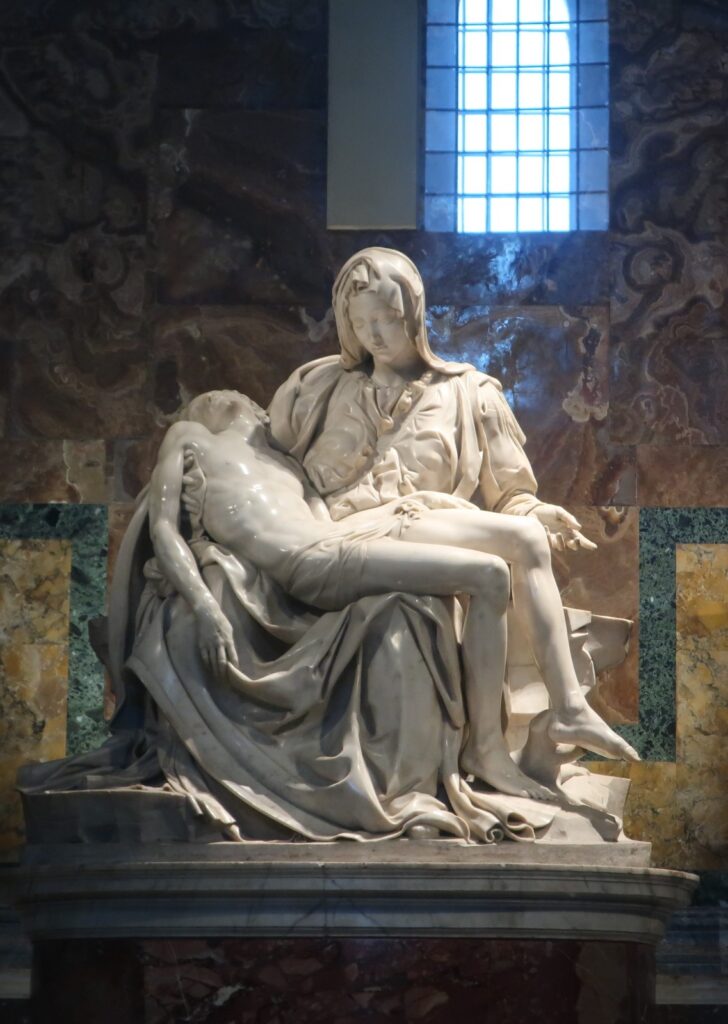
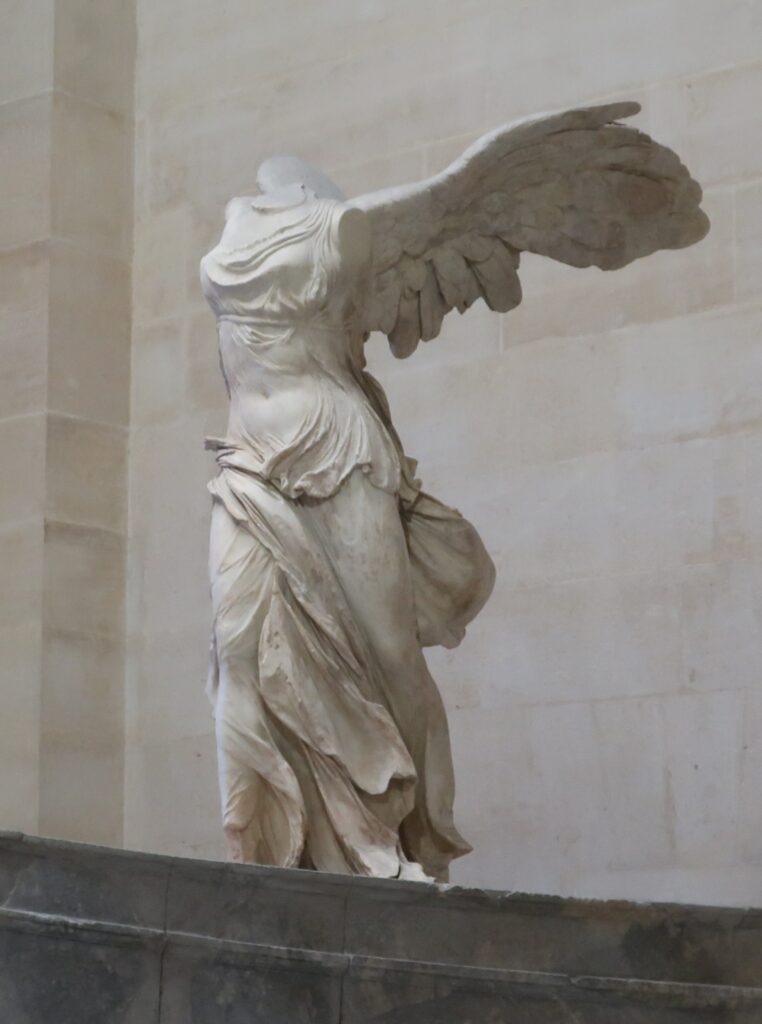
When I saw these statues, I was completely ecstatic and disoriented. I realized that more than 15 minutes had passed. I was so absorbed in the utter beauty before me that all thoughts stopped. (For more information.St. Peter's Basilica, the main temple of Roman Catholicism - overwhelmed by beauty beyond imagination, Vatican, Italy (4), ,(12) On the Louvre's treasure, "Nike of Samothrace," which was too good to be true - a masterpiece of Hellenistic sculpture that I highly recommend!(See article on)
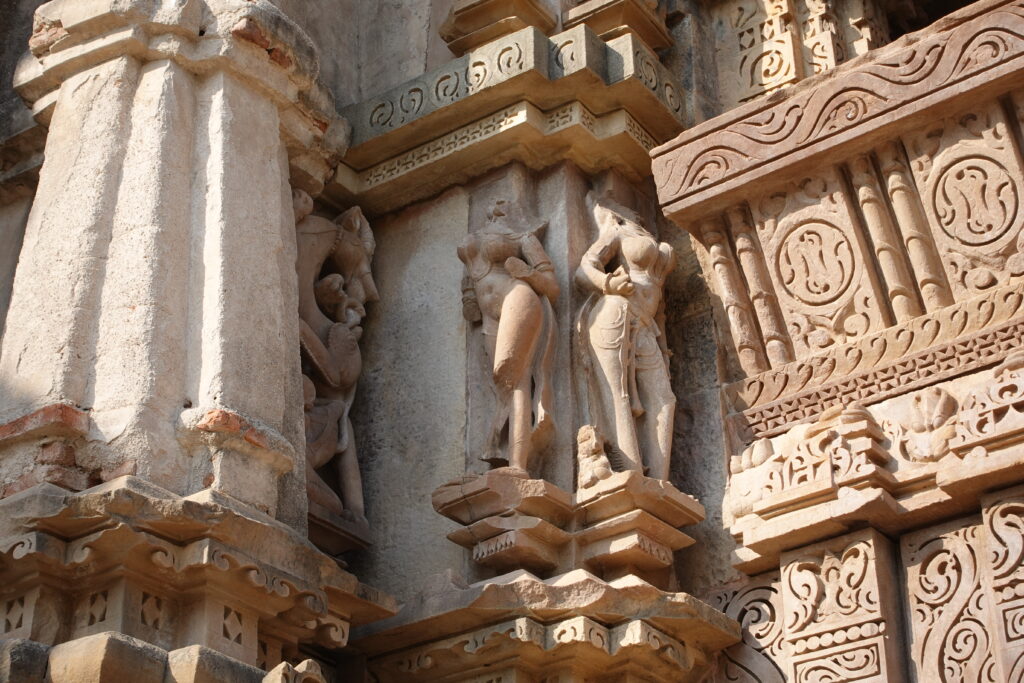
And the sculpture that had the strongest impact on me in Khajuraho was this one. This sculpture is from the Chitragupta Temple, and I was struck by the line where the left leg comes forward and the right leg twists forward. The expression of the fleshiness of the waist and thighs is also outstanding.
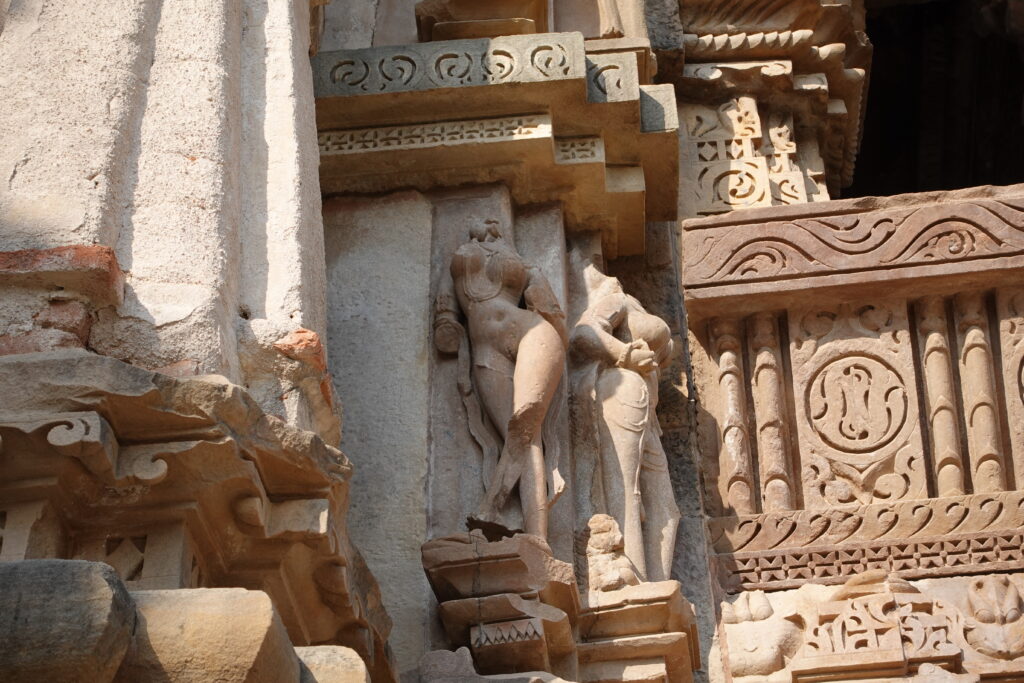
I was so fascinated by this graceful sculpture that I was unable to move for a while under the scorching sun.
Then I suddenly realize.
Oh, this statue is also missing a face and an arm....
Yes, it is just like "The Nike of Samothrace". There is beauty in the lack of it. This is easier said than done, but it is a feeling that is difficult to convey. But I know it. And I am actually feeling it here.
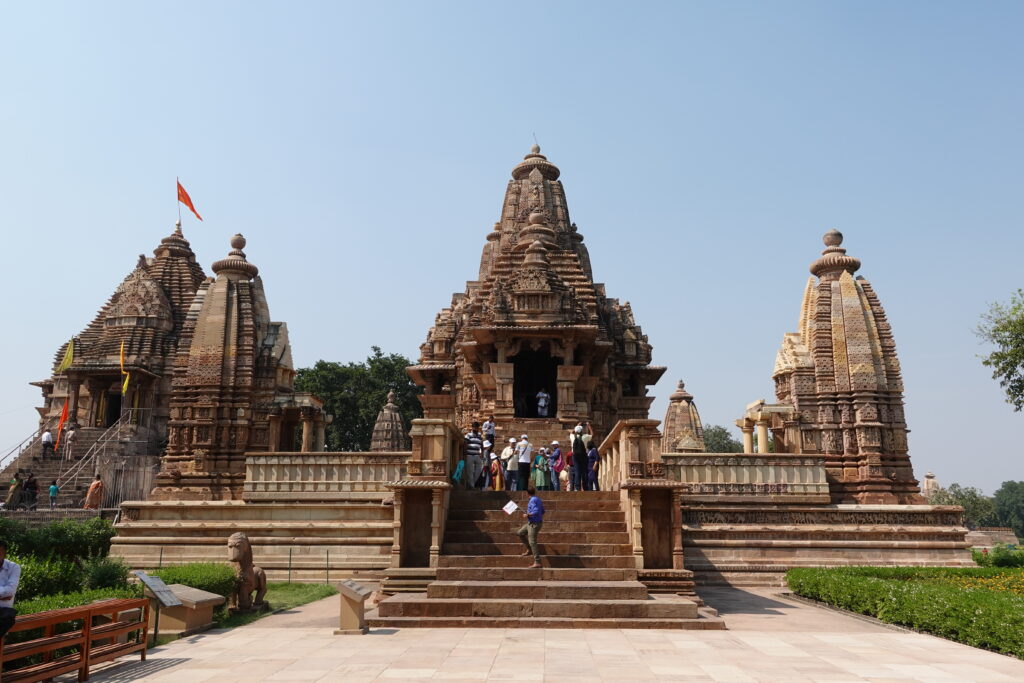
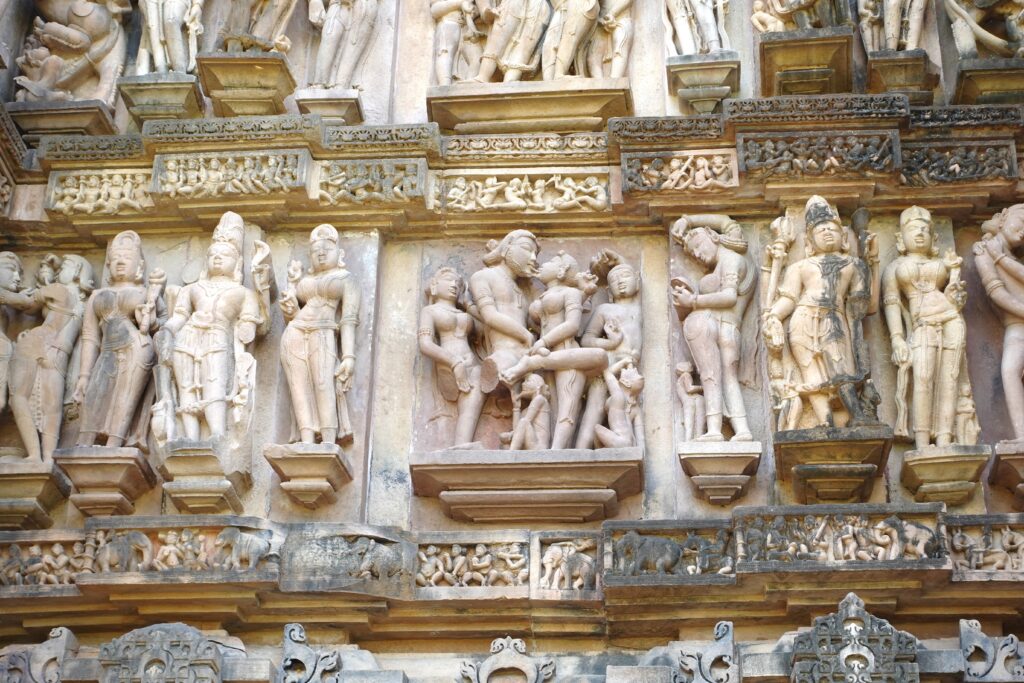
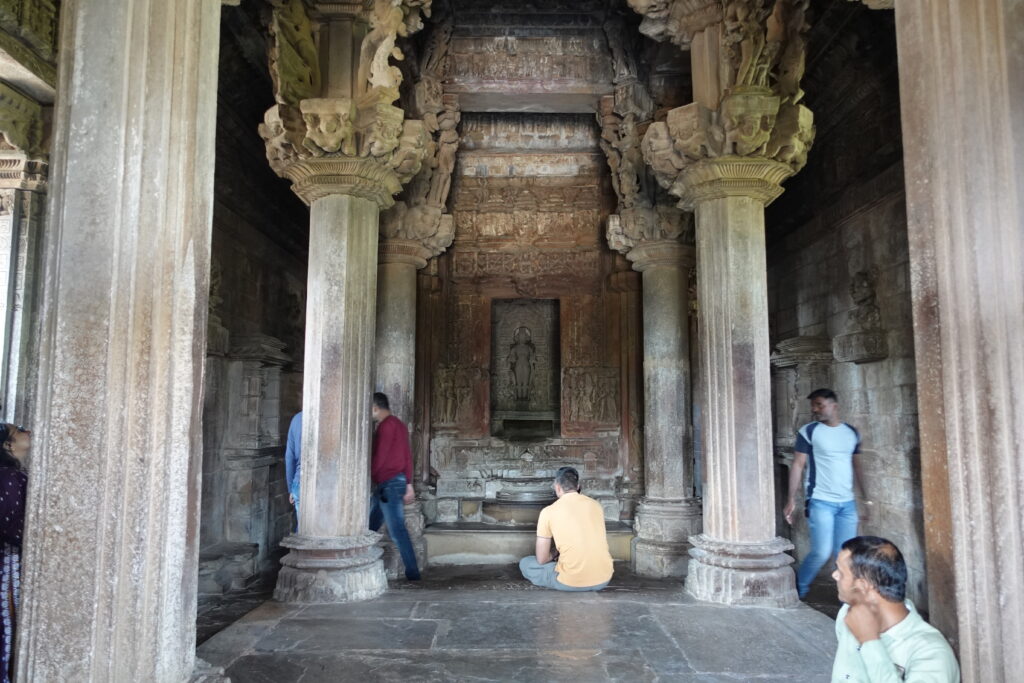
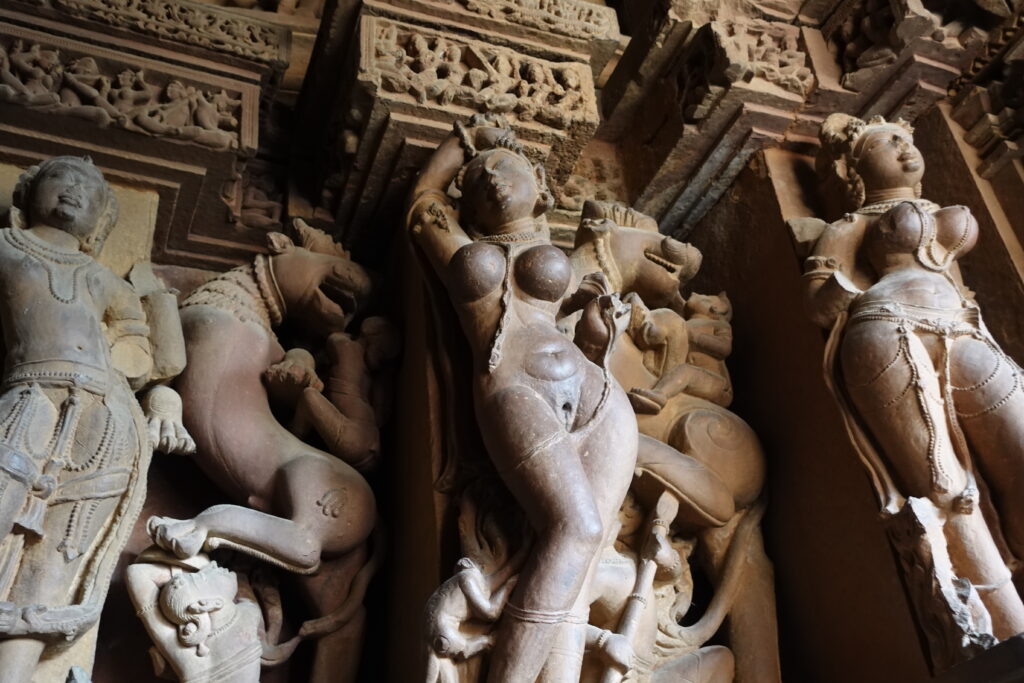
Now that we have talked about the Khajuraho Temple complex, how do you like it? Some of you may have been surprised by the strong pictures. However, I think it is time for you to think about this.
And what, for that matter, is a statue of Mitna in the first place?" And.
I told you a little bit at the beginning of this article about how the Mitna statues come from Hindu sexual culture, but they will still remain a mystery.
We would like to discuss in detail what the image of Mitna is, but it would be a very long article. If you are interested, please read the book written by Noboru Karashima and Yasuaki Nara, which I introduced above.A World History of Life 5: Faces of India."I hope that you will read the following article. It is an eye-opener, as it makes some very interesting points.
In any case, Hinduism is overwhelmingly more open to sex than Buddhism.
This may have a great deal to do with whom Buddhism and Hinduism were primarily religions.
"[Buddhist Lecture, The Life of Buddha (Shakyamuni) as Seen in Local Photographs] ⒂ Why Buddhism Spread So Rapidly in India: the Birth of a Great Nation Distancing Itself from Brahmanism and the Rise of New Merchants."As I mentioned in the article "The World of Buddhism," Buddhism was born out of the rejection of the mainstream Brahminical worldview of the time. In other words, it was a religion for those who were not satisfied with the way things were in the world and chose to become ordained. In other words, it was a religion that was far removed from the ideas of ordinary people living ordinary lives.
So what kind of teachings were the ordinary people of India familiar with? It was Brahmanism (later Hinduism), which centered on prayers to various gods and teachings affirming desires.
Hinduism has created a form of belief that captures the hearts of the common people of India. It is precisely here that the pleasure of sexual love has been placed as one of the three main purposes of life.
This raises a new question: Why did Buddhism, which had nothing to do with ordinary people, spread in India? The circumstances surrounding this question are also very interesting, but I will stop here because there is no end to the discussion. If you are interestedThe life of Buddha (Shakyamuni Buddha) as seen through local photographs! The Buddhist Order of Increasing Authority"Please refer to the article in the following section.
Khajuraho was a much more wonderful place than I had imagined. I can say I was shocked.
This is by far my number one place for Hindu art in India. Although I have never said that I don't want to go back to India, this is a place that I would definitely like to return to. It was such a wonderful place. There is no doubt that this is the pinnacle of Indian art.
In the next article, I would like to talk about Shiva Linga worship in India on the occasion of this Khajuraho.
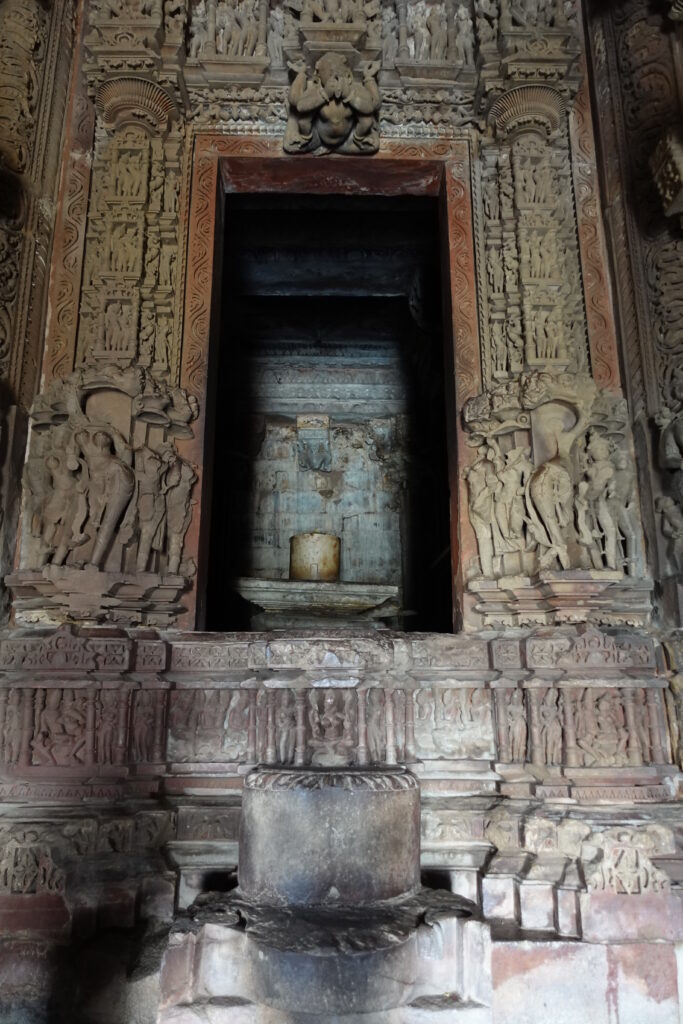
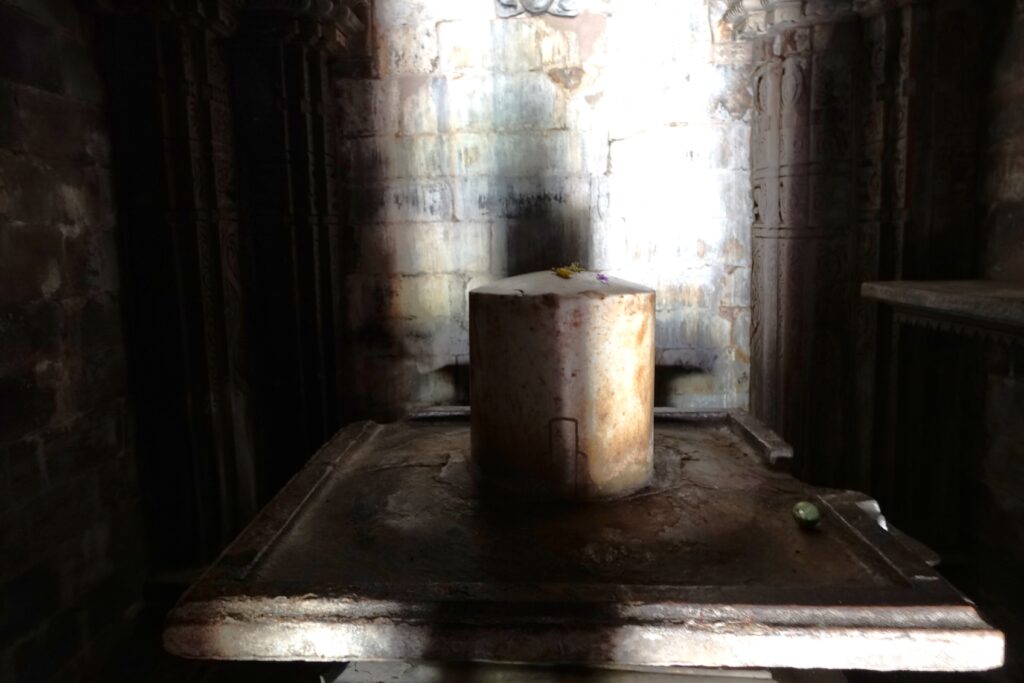
What is Shiva Linga?
It is a symbol of phallic worship in India. Moreover, it has a strong connection with Shiva, one of the three principal deities of Hinduism, and is of great importance to Indian beliefs.
I have come all the way to Khajuraho to think about Hinduism and sexuality. So I thought it would be a good opportunity to go further and learn about Shiva Linga, which is highly respected in Hinduism.
The Shiva Linga is so important in the beliefs of the Indian people. It is so deeply rooted in Indian life that you can almost always find a Shiva Linga wherever you go in India.
Phallic worship is an outdated superstition. Don't be fooled. Even today in India, young men and women pray to the Shiva Linga as a matter of course.
To know India, one cannot avoid Shiva Linga. Let us continue our look.
*Below is an article with reference books on India and Sri Lanka that we have referenced in this travelogue. Please refer to them.
periodA list of recommended reference books to help you learn about Indian history, religion, and culture."
periodA list of recommended books for "those who want to know more about Indian Buddhism."
periodA list of recommended books to help you get to know the Buddhist country of Sri Lanka."
Next Article.
Click here to read the previous article.
Related Articles











